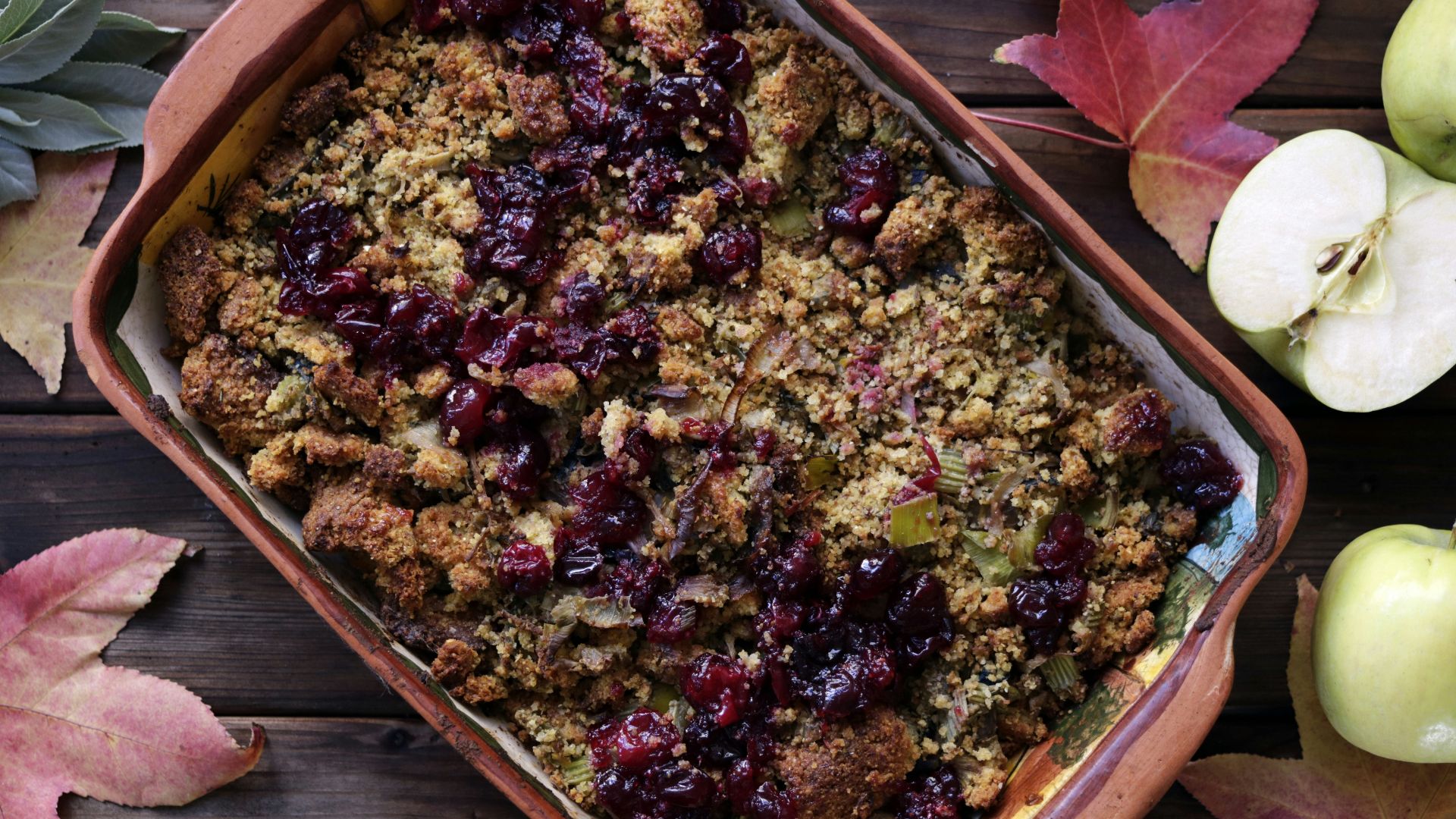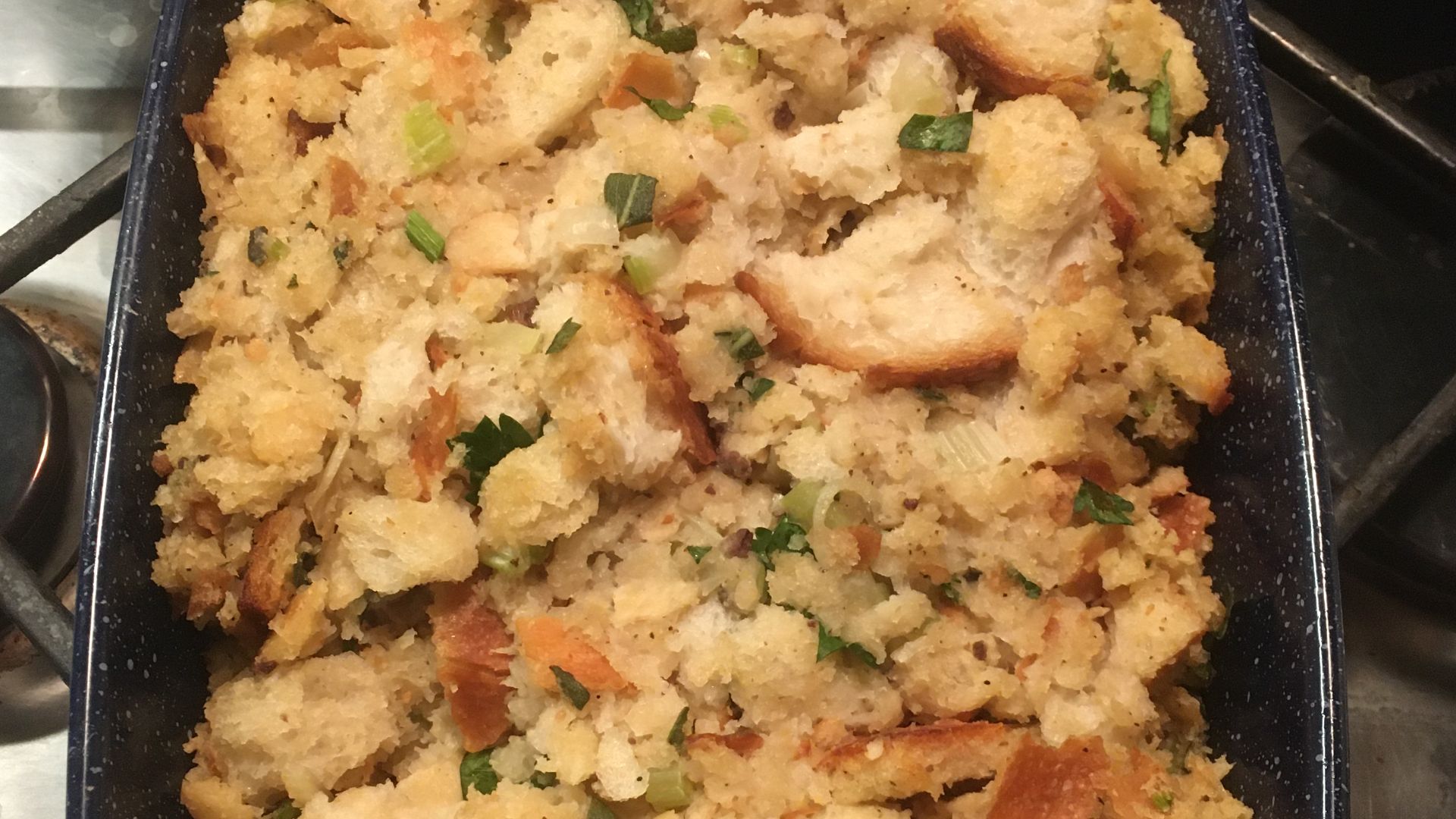So, you're looking to make a splash at thanksgiving dinner this year? Well, you're certainly not alone—but the question is where do you start? Maybe it's time to look at the stuffing.
Great stuffing sparks conversation at the Thanksgiving table. Eyes close in appreciation. Compliments flow freely. The dish that once played second fiddle to turkey now commands attention through careful technique and quality ingredients. So, let's dive in!
Bread Is Everything
Exceptional stuffing always starts with bread, but not just any bread. The difference between mediocre and memorable stuffing often lies in this fundamental ingredient. Traditional white sandwich bread might be convenient, but it lacks the structure and flavor complexity needed for truly outstanding stuffing.
Instead, reach for artisanal sourdough or a hearty country loaf with a substantial crust. These breads hold their integrity when moistened, creating distinct pockets of texture rather than dissolving into mush.
The aging process is equally important. Fresh bread makes soggy stuffing—a culinary disappointment no one deserves on Thanksgiving. Three days before the big day, cube your chosen bread and spread it across baking sheets. Let it dry naturally on your counter, stirring occasionally to ensure even drying.
This patient approach yields bread that's well dehydrated yet still capable of absorbing flavors without disintegrating. For those short on time, a low-temperature oven (around 275°F) can accelerate the process, but the slow air-dry method remains superior for developing subtle flavor notes.
Building Depth Layer By Layer
Stuffing's soul lives in its aromatic foundation. The classic mirepoix—onions, carrots, and celery—serves as the baseline, but the magic happens in how you prepare them. Rather than simply sweating these vegetables until they are soft, take the time to caramelize the onions properly.
Herbs play a critical supporting role, with sage taking center stage. Fresh sage leaves, fried briefly in butter until crisp, deliver a more concentrated flavor than their dried counterparts. This technique releases aromatic oils that dried herbs simply cannot provide.
The most overlooked aromatic element? Homemade stock. Store-bought versions often contain excessive salt and preservatives that mask the pure flavors you're trying to build. A simple stock made from roasted chicken bones, vegetable scraps, and herbs the day before will elevate your stuffing immeasurably, creating a cohesive flavor profile impossible to achieve with packaged alternatives.
Patience And Balance
Well, the perfect stuffing requires balanced moisture—too dry and it's unpleasant; too wet and it becomes soggy. Add stock gradually, allowing each addition to be absorbed before adding more. The bread should be moistened but still maintain structural integrity when gently pressed.
Temperature contrast brings textural magic. While the interior should be moist and tender, the top layer needs direct heat exposure to develop the contrasting crispy crust that makes stuffing irresistible. Start covered to cook through, then uncover for the final 15–20 minutes of baking. For even more textural contrast, dot the surface with small pieces of butter before this final uncovered bake.
Another important technique is resting. Of course, like any good roast, stuffing benefits tremendously from a 15-minute rest after leaving the oven. This allows moisture to redistribute and flavors to settle.
KEEP ON READING

The Most Popular Chocolate Bars in the USA








